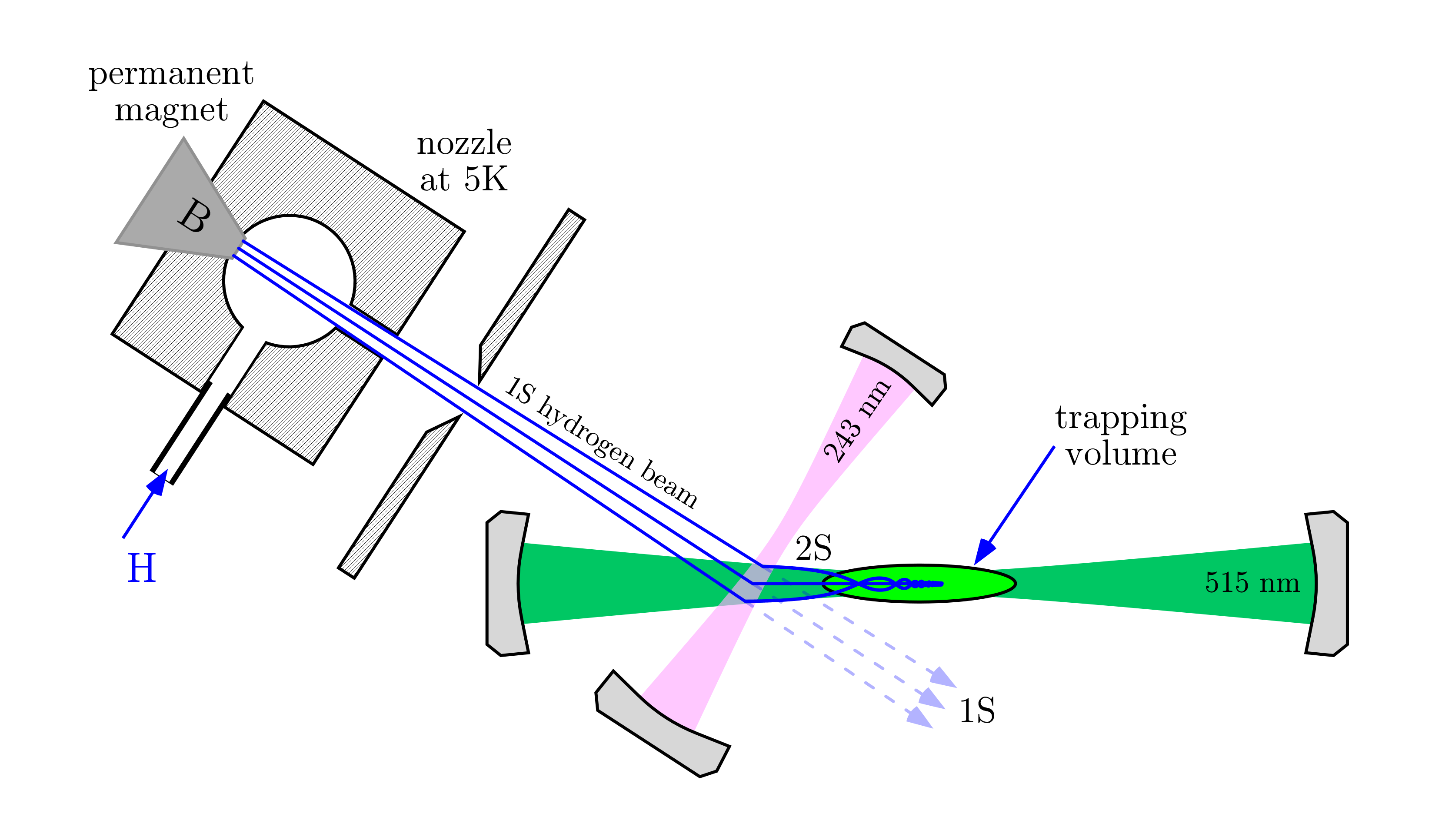
Hydrogen optical clock
Any atomic or molecular transition frequency is expressed through a dimensionless theoretical expression that is multiplied with the Rydberg constant to convert to the SI units of Hz. For most atoms or molecules the theoretical expression is not very accurate. However, for hydrogen or hydrogen-like systems, this expression can be extremely accurate. This opens the possibility to redefine the SI second by fixing the value of the Rydberg constant removing the last object from the SI system, the Cs atom. The best realization of this second would then be an atomic clock based on an optical transition in atomic hydrogen.
Trapping and laser cooling of atomic hydrogen has been a difficult task that has not yet been achieved except with cryogenic magnetic traps. These traps give rise to large Zeeman shifts due to the high magnetic fields. Even though there are tricks to reduce these shifts, precision measurements are difficult under these conditions. Operating such a trap requires a large and complex setup and thus rules out a practical atomic clock.
We are building a trap for atomic hydrogen that is not more
complex than a usual optical atomic clock. It is based on an optical dipole
trap that is operated at the magic wavelength similar to the most
accurate optical clocks. We propose a new method to load such a trap
with a two-photon transition that avoids the need for a Lyman alpha laser (121 nm). Since the 1S-2S clock transition, with a line width of
1.3 Hz, can be driven in a Doppler-free manner with two photons, it is not
required to cool the hydrogen atoms to a very low temperature. Our compact setup could be operated as a clock
representing a computable time scale as well as to improve spectroscopic data
to test Quantum Electrodynamics. Moreover, such a setup could be
loaded with anti-hydrogen from a magnetic trap to significantly improve the
measurement accuracy.
Current Members
Omer Amit, Thomas Udem
If you are considering joining our team as a Bachelor, Master or PhD student, or as a Postdoc, please email to: Thomas Udem
This project is part of part of the Max Planck-RIKEN-PTB Center for Time, Constants and Fundamental Symmetries.

